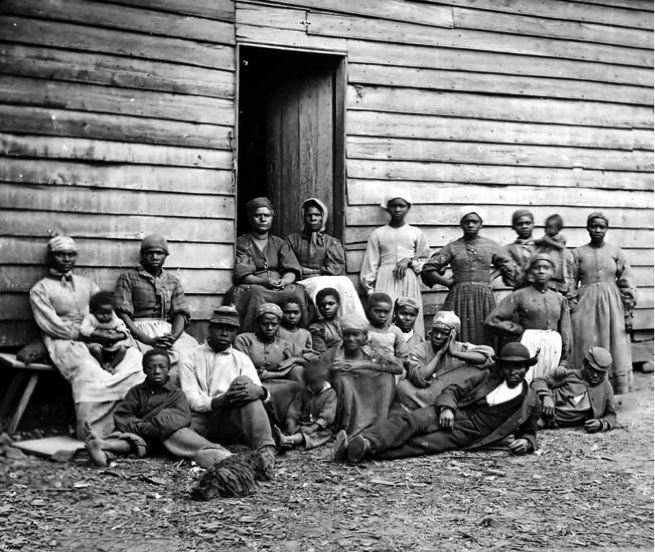As promised, we will continue to share notes on our creative process to give you a peak behind the curtain & right into the way we think about creativity at GroundWorks DanceTheater. This series of posts focuses on our new work – The House of Sparrows – due to debut as part of EJ Thomas Hall’s Contemporaries Series on March 5th & 6th, 2015, followed immediately by the Cleveland premiere at the Breen Center for the Performing Arts on March 20th & 21st, 2015.
In this week’s edition, Executive Artistic Director David Shimotakahara shares his thoughts on how he began to approach a topic as vast & complex as the American Civil War.
From Shimotakahara:
“We fall back in time. To a place where what is known is often obscured and unresolved. We know of extreme hardship and toil. A dependence on the land.
We began working on a group section that is likely to be danced in silhouette. It references, manual toil and labor, slavery. In this week’s installment, I hope to lend context to the work given the landscape and environment of the time.
First, I offer the following historical information:
As a nation, the United States was still primarily agricultural in the years before, during and immediately after the Civil War. About three-quarters of the population lived in rural areas, including farms and small towns. Nevertheless, the Industrial Revolution that had hit England decades before gradually established itself in the “former colonies.”
While factories were built all over the North and South, the vast majority of industrial manufacturing was taking place in the North. The South had almost 25% of the country’s free population, but only 10% of the country’s capital in 1860. The North had five times the number of factories as the South, and over ten times the number of factory workers. In addition, 90% of the nation’s skilled workers were in the North.
The labor forces in the South and North were fundamentally different, as well. In the North, labor was expensive, and workers were mobile and active. The influx of immigrants from Europe and Asia provided competition in the labor market, however, keeping wages from growing very quickly. The Southern economy, however, was built on the labor of African American slaves, who were oppressed into providing cheap labor. Most Southern white families did not own slaves: only about 384,000 out of 1.6 million did. Of those who did own slaves, most (88%) owned fewer than 20 slaves, and were considered farmers rather than planters. Slaves were concentrated on the large plantations of about 10,000 big planters, on which 50-100 or more slaves worked. About 3,000 of these planters owned more than 100 slaves, and 14 of them owned over 1,000 slaves. Of the four million slaves working in the South in 1860, about one million worked in homes or in industry, construction, mining, lumbering or transportation. The remaining three million worked in agriculture, two million of whom worked in cotton.
-Excerpted from: http://www.historycentral.com/CivilWar/AMERICA/Economics.html
I have also been captivated by the sheer scale of slavery in this country at the time. The following statistics and anecdotes help to round out this picture:
(in 1860) – More than 4 million enslaved human beings lived in the south, and they touched every aspect of the region’s social, political, and economic life.
–Gordon Rhea, Notes from Why Non Slaveholding Southerners Fought
The South was defined by slavery…“It has fashioned our modes of life, and determined all of our habits of thought and feeling, and molded the very type of our civilization.”
-Presbyterian minister Benjamin Morgan Palmer, from Charleston, and a sermon entitled, The South Her Peril and Her Duty
The relationships of this time are layered – complex – and range from mundane to extremely brutal:
In reality, treatment of slaves ranged from mild and paternalistic to cruel and sadistic. Husbands, wives, and children were frequently sold away from one another and punishment by whipping was not unusual. The United States Supreme Court in the 1857 Dred Scott Decision ruled that slaves were subhuman property with no rights of citizenship. They had no legal means of protesting the way they were treated.
–From online source Civil War Trust
One of the greatest takeaways in my continued research is that this time in our history was one of great change. Innovation and progress pushed on, though slavery persisted, threatening to undo the new reality for the working class in many of our industrially cities:
Long before the Civil War, Americans were building the industrial infrastructure, the competitive marketplace, the urban spaces, and the transportation system that they would expand further and come to rely upon in the latter half of the century. They were grappling with many changes: the rapid growth of cities in a world where most people still lived in areas of 2,500 people or less and knew all or most of their neighbors; the emergence of hourly wage work conducted in large factories regulated by clocks, whereas people had previously worked from home or in small shops and were apprenticed to a trade. Above all, they continued to wrestle with the contradiction at the heart of the era: the existence of chattel slavery in a country dedicated to the proposition that all men are created equal.
-Excerpted from: http://www.shmoop.com/antebellum/summary.html
This tension and juxtaposition is making its way into the work in various ways. Between the choreography and Steven’s composition, the piece is taking shape.”
Continue to join us along this journey & make sure to reserve your tickets to see the finished product this March!



